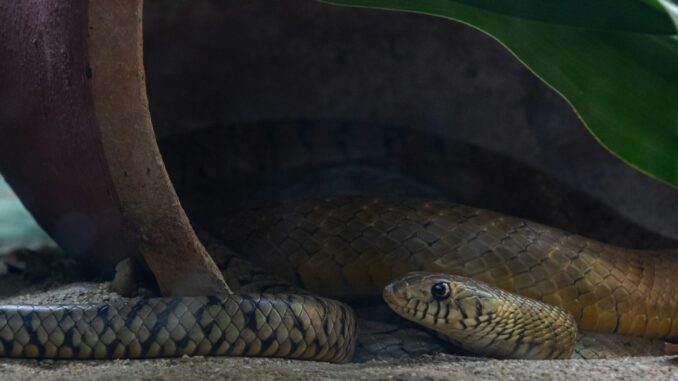
Reptiles, such as snakes and lizards, are fascinating creatures that make wonderful pets, but providing them with the right habitat is essential for their health and well-being. Use these terrarium tips to create a well-designed terrarium to mimic their natural environment and offer a comfortable space for them to thrive. In this article, we will cover key aspects of setting up a terrarium for your lizard, including lighting, heating, substrate, and decorations, to help you create the perfect habitat.
Lighting
Proper lighting is crucial for the overall health of your reptile. Most reptiles require a combination of UVB and UVA light to support their metabolic processes and synthesis of Vitamin D3. UVB light helps reptiles metabolise calcium, which is essential for bone health and preventing metabolic bone diseases. Place UVB bulbs in the terrarium, ensuring that they are the appropriate size and strength for your specific reptile species. Additionally, providing a basking light to create a temperature gradient will allow your reptile to regulate its body temperature effectively.
Heating
Maintaining the right temperature in the terrarium is vital for your lizard’s well-being. Reptiles are ectothermic, meaning they rely on external sources of heat to regulate their body temperature. Use heating elements like heat lamps or under-tank heaters to create a warm basking spot where your reptile can comfortably raise its body temperature. Monitor and regulate the temperature in different areas of the terrarium to offer your lizard a range of temperatures to choose from, including a cooler zone for when they need to cool down.
Substrate
Choosing the right substrate is essential for creating a comfortable and hygienic environment for your lizard. The substrate should mimic the natural habitat of your reptile species while providing a safe and functional surface for them to walk on. Common substrate options include reptile carpet, bark chips, coconut fibre, and sand. Consider the specific needs of your reptile species when selecting substrate to ensure it is appropriate for their health and comfort.
Decorations
Adding decorations to the terrarium not only enhances its aesthetic appeal but also creates a stimulating and enriching environment for your reptile. Incorporate branches, rocks, hides, and plants to create a naturalistic landscape that offers opportunities for exploration and exercise. Ensure that decorations are securely placed to prevent injury to your reptile and provide hiding spots where they can feel secure. Avoid using decorations with sharp edges or toxic materials that could harm your reptile.
Maintenance
Regular maintenance of the terrarium is essential to ensure the health and well-being of your reptile. Clean the enclosure regularly by removing feces, uneaten food, shed skin, and soiled substrate. Monitor temperature and humidity levels to ensure they are within the appropriate range for your reptile species. Perform regular spot cleaning and deep cleanings as needed to prevent the buildup of bacteria and maintain a clean and healthy environment for your reptile.
Conclusion
These terrarium tips can help in creating the perfect habitat for your reptile involves careful consideration of lighting, heating, substrate, and decorations to provide a comfortable and enriching environment. By incorporating these terrarium tips into your lizard’s habitat setup, you can support their health and well-being while creating a visually appealing and functional space for them to thrive. Remember to research the specific needs of your reptile species and make adjustments to their habitat as needed to ensure they are happy and healthy in their new home. With a well-designed terrarium and proper care, your reptile can enjoy a long and fulfilling life as a valued member of your family.
Leave a Reply
You must be logged in to post a comment.